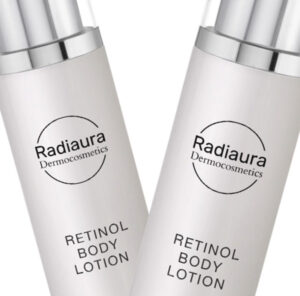February 8, 2024
Understanding the Basics: What is Radiation Dermatitis?

Enhancing Quality of Life
Radiation therapy is a common cancer treatment method that can lead to various side effects, one of which is radiation dermatitis. This condition occurs when the skin cells are affected by the radiation, resulting in inflammation and irritation. Radiation dermatitis can manifest as redness, itching, dryness, blistering, and peeling of the skin in the treated area. The severity of radiation dermatitis can vary depending on factors such as the dosage of radiation, the type of radiation therapy used, and individual skin sensitivity. Acute radiation dermatitis is often defined as radiation dermatitis that occurs during radiation treatment and up to 90 days after completion of radiation. Proper skincare during radiation treatment is essential to help manage and alleviate the discomfort associated with radiation. Radiaura Dermocosmetics offers a regimen for acute radiation related skin effects, consisting of Brightening Serum, Radiation Relief Lotion, and Silicone Skin Gel.
“Radiation therapy is a common cancer treatment method that can lead to various side effects, one of which is radiation dermatitis. This condition occurs when the skin cells are affected by the radiation, resulting in inflammation and irritation. “
Cellular Response and Inflammation
When exposed to high-energy radiation, the skin’s DNA gets damaged, leading to inflammation and cell death. This results in redness, itching, and sometimes peeling and blistering.
Impaired Blood Flow
Radiation therapy can also cause damage to the blood vessels supplying the skin. Diminished blood flow deprives the skin of oxygen and essential nutrients, further exacerbating inflammation and tissue damage.
Reactive Oxygen Species
Radiation therapy generates reactive oxygen species (ROS) within the skin which are molecules that can cause cellular damage by oxidizing lipids, proteins, and DNA. The accumulation of ROS disrupts the delicate balance within the skin, leading to oxidative stress and subsequent tissue injury.
Altered Cellular Differentiation
Radiation dermatitis is a complex condition that arises due to various cellular and molecular mechanisms. Improving the effects of radiation dermatitis involves implementing skincare practices and utilizing specialized creams to enhance skin protection. Ensuring optimal skincare hygiene is crucial in safeguarding the skin from the effects of radiation therapy. This entails gentle cleansing with mild, fragrance-free cleanser to prevent irritation and maintaining skin moisture through the application of products such as lotions, creams, and silicone skin gel. These products not only provide a physical barrier to shield the skin from radiation but also help in nourishing and soothing the affected areas. Sun protection is also important to protect fragile skin. A consistent and diligent skincare regimen is vital in managing the skin effects of radiation dermatitis and promoting overall skin health during and post-treatment. Radiaura Dermocosmetics is here to help!
Factors Contributing to Radiation Dermatitis
The dose of radiation, the location and size of the treatment area, the cumulative number of treatment fractions, and the use of other treatments at the same time can contribute to the development of radiation dermatitis.
Conclusion
Radiation dermatitis is a complex condition that arises due to various cellular and molecular mechanisms. Improving the effects of radiation dermatitis involves implementing skincare practices and utilizing specialized creams to enhance skin protection. Ensuring optimal skincare hygiene is crucial in safeguarding the skin from the effects of radiation therapy. This entails gentle cleansing with mild, fragrance-free cleanser to prevent irritation and maintaining skin moisture through the application of products such as lotions, creams, and silicone skin gel. These products not only provide a physical barrier to shield the skin from radiation but also help in nourishing and soothing the affected areas. Sun protection is also important to protect fragile skin. A consistent and diligent skincare regimen is vital in managing the skin effects of radiation dermatitis and promoting overall skin health during and post-treatment. Radiaura Dermocosmetics is here to help!
Disclaimer: This article is for informational purposes only and should not be taken as medical advice. Consult with a healthcare professional for personalized guidance on radiation therapy and its potential impact on your skin health.
References
Baskar R, Lee KA, Yeo R, Yeoh KW. Cancer and radiation therapy: current advances and future directions. Int J Med Sci. 2012;9(3):193-9. doi: 10.7150/ijms.3635. Epub 2012 Feb 27. PMID: 22408567; PMCID: PMC3298009.
Hymes SR, Strom EA, Fife C. Radiation dermatitis: clinical presentation, pathophysiology, and treatment 2006. J Am Acad Dermatol. 2006 Jan;54(1):28-46. doi: 10.1016/j.jaad.2005.08.054. PMID: 16384753.
Kodiyan J, Amber KT. A Review of the Use of Topical Calendula in the Prevention and Treatment of Radiotherapy-Induced Skin Reactions. Antioxidants (Basel). 2015 Apr 23;4(2):293-303. doi: 10.3390/antiox4020293. PMID: 26783706; PMCID: PMC4665477.


